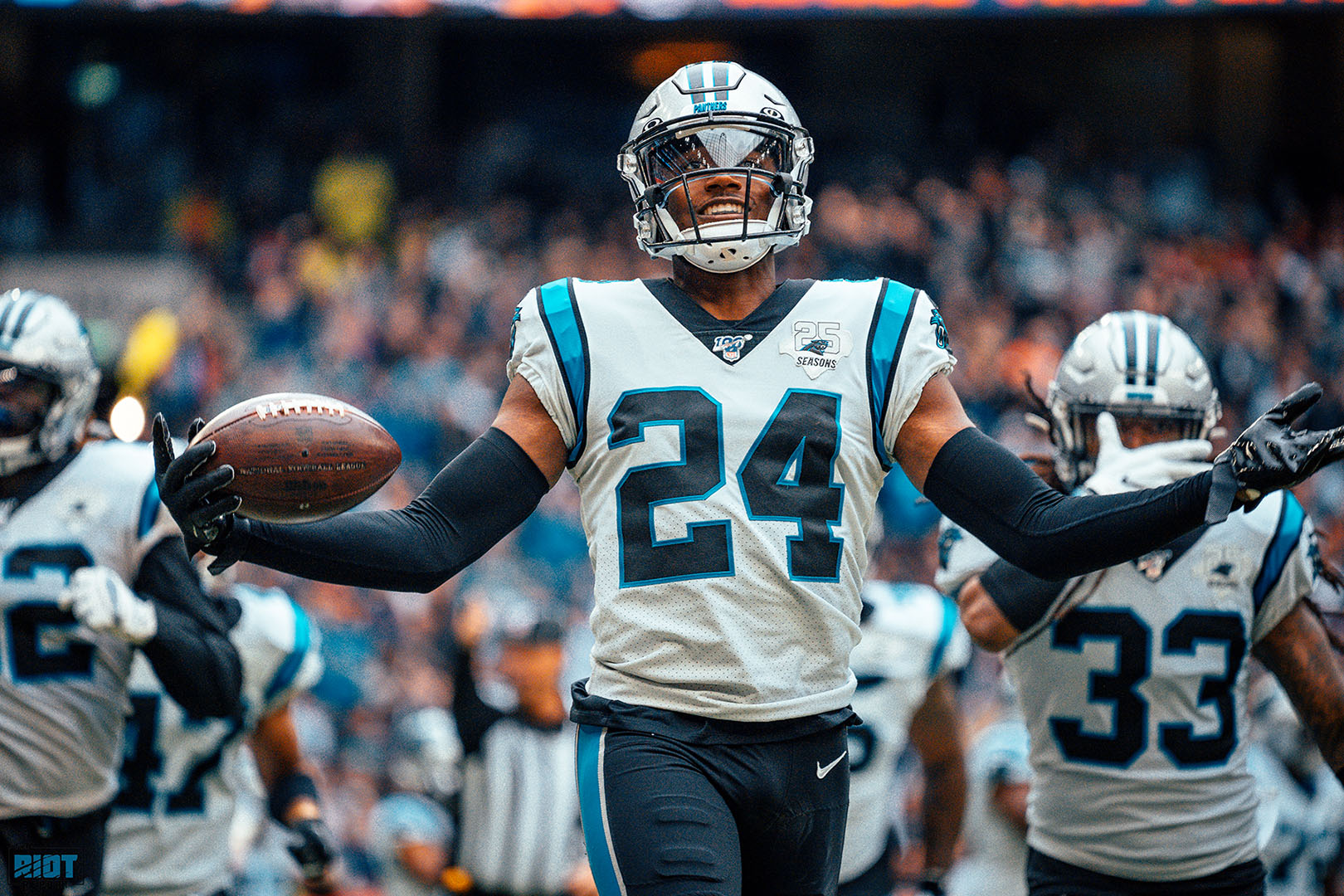The Panthers started hot against the Bucs in London with an interception on the very first play of the game, a turnover the Panthers would soon turn into three points and a lead they would never relinquish. It is easy to overstate the importance of one play – the game could have gone very differently from how it did even after Bradberry’s interception, but on a day where the Panthers consistently put Winston under pressure and forced a remarkable seven turnovers, in many ways, this play encapsulates everything that was so good about the Panthers defense in London.
So how did the Panthers come down with this interception? Was it a case of an error forced or an error freely given?
Reading The Defense
The Bucs aren’t doing anything hugely special on complex on this play, with the same read combination on both sides of the field with the running back staying in to pass protect. They run both tight ends out to the flat with both receivers initially working vertically before breaking back inside in an attempt to find the space in what they seem to presume will be some form of zone coverage:
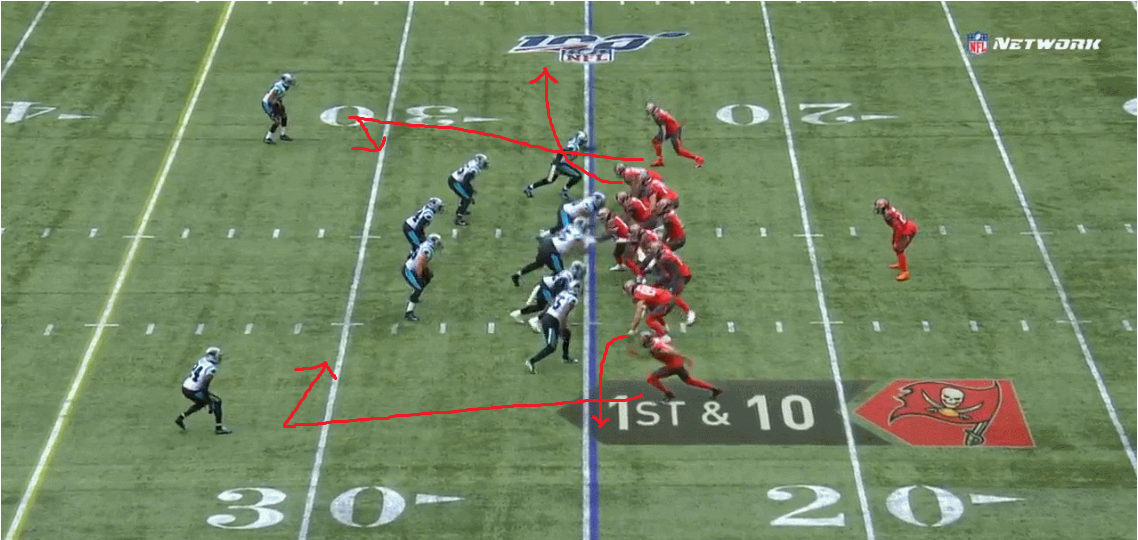
The read here is relatively simple for Winston: if the Panthers bring five pass rushers, you effectively have a high-low read with the defense having to either rush Kuechly outside or Bradberry down in order to take away the tight end – and in the process, that should create enough space to complete the curl. If the Panthers drop seven, the quarterback has to keep the linebackers inside and then look to fit the ball into the space in the zone. So what did the Panthers do?
Well, as can be seen in the following image, the Panthers drop Irvin into man coverage on the tight end with Reid taking the equivalent role on the far side and Bradberry and Cockrell dropping deep initially and Kuechly and Thompson staying inside in zone:
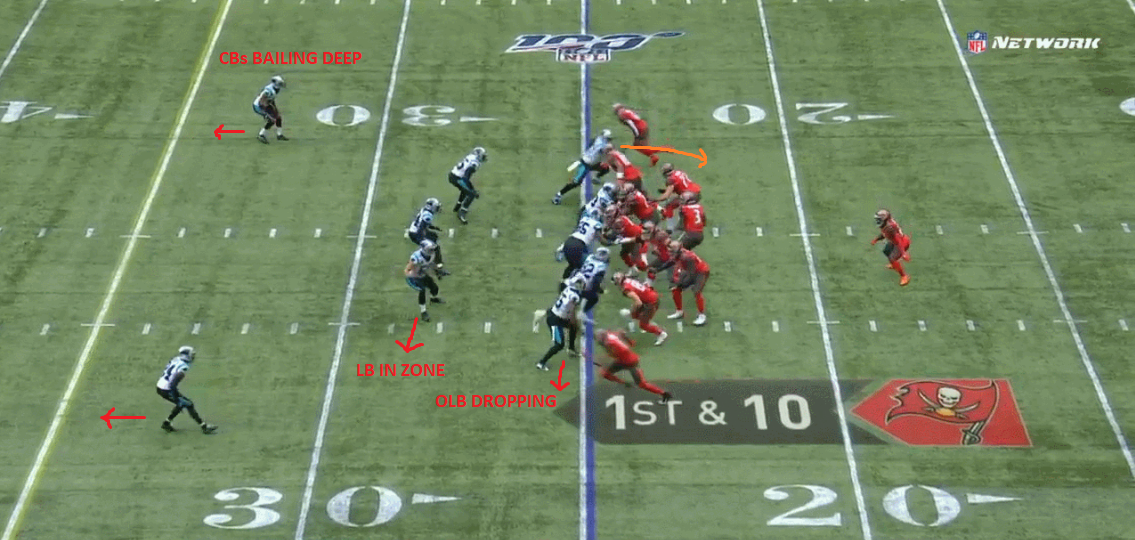
The fact that Irvin drops into man might well have been the spanner in the works for the Bucs – given what the rest of the defense is doing, the fact that they looked to cover the tight ends in this way is the kind of wrinkle that Rivera has repeatedly talked about as a way of trying to confuse the quarterback post-snap and get them to doubt what they’re seeing.
And that’s exactly what happened.
Refusing To Bite
By the time Jamies Winston gets to the bottom of his drop, he has now had time to read the defense and should have recognized Kuechly dropping into zone with the corner wide and over the top of the receiver. The other side of the field is a mirror image of this with Cockrell staying over the top of Godwin and Thompson shading inside the route with Eric Reid in man coverage with the tight end.
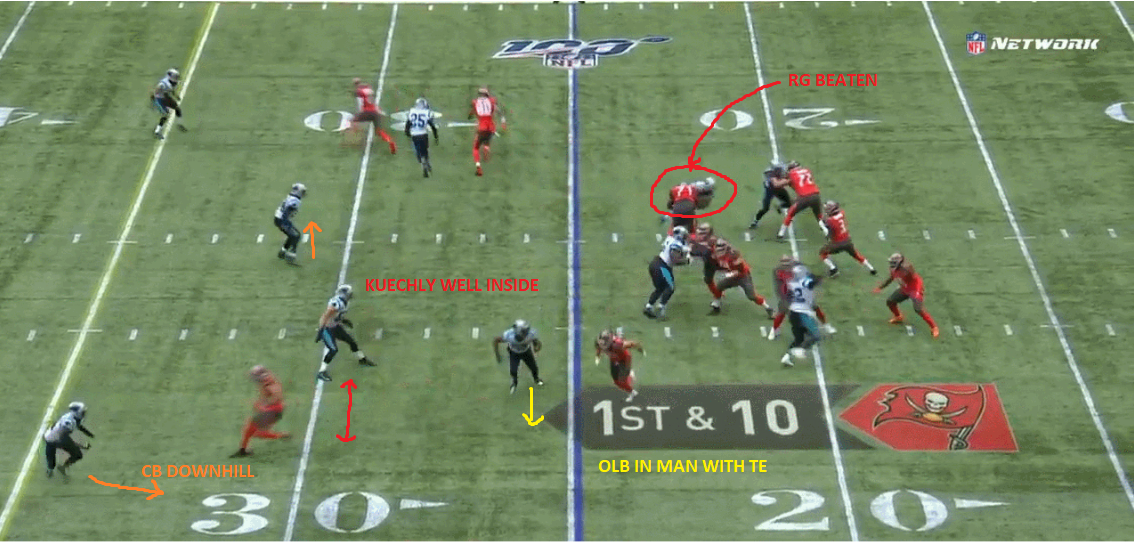
There are two things to focus on in the above image – what Winston is reading in coverage and what is going on in terms of the pass rush. In the first instance, Winston can see, as mentioned above, the Kuechly is well inside the curl which should give him space to fit the ball outside of him. However, what he also likely saw at this stage is Bradberry beginning to dive towards the outside route, with his body shaping to break on the ball. If you look at the far side of the field, it is worth noting how different Bradberry’s body shape is compared to Cockrell, who is patiently waiting above the route.
There is a chance that Bradberry wasn’t even looking to break on the flat route, but was instead was working outside in case of an outside dig route by the receiver, and so it is this that Winton misreads – so when Bradberry recognizes that the curl is actually going inside, he is able to redirect and work back to the catch point.
In terms of the pass rusher, Poe is being doubled as the 1-tech and with Butler also being doubled by the running back and the far-side edge defender not making much headway, the only real chance of pressure appears to be from McCoy as the 3-tech on the far side. Fortunately, McCoy appears to be very much winning his chance at a one-on-one, as having driven the guard off balance, he is now releasing outside and looking to get to the quarterback.
This is one of the major reasons why McCoy chose to come to Carolina in the first place – the possibility to be put in consistent position to just beat the man across from him without having to deal with constant double teams. He certainly made the most of that chance against his former team with 2.5 sacks on the day, starting with this pressure on the opening play.
So what happened when Winston threw the ball?
Taking Your Chances
When Winston releases the ball, Kuechly has already started to break inside the route, with Bradberry also working back to the ball, but neither is in clear position for the interception:
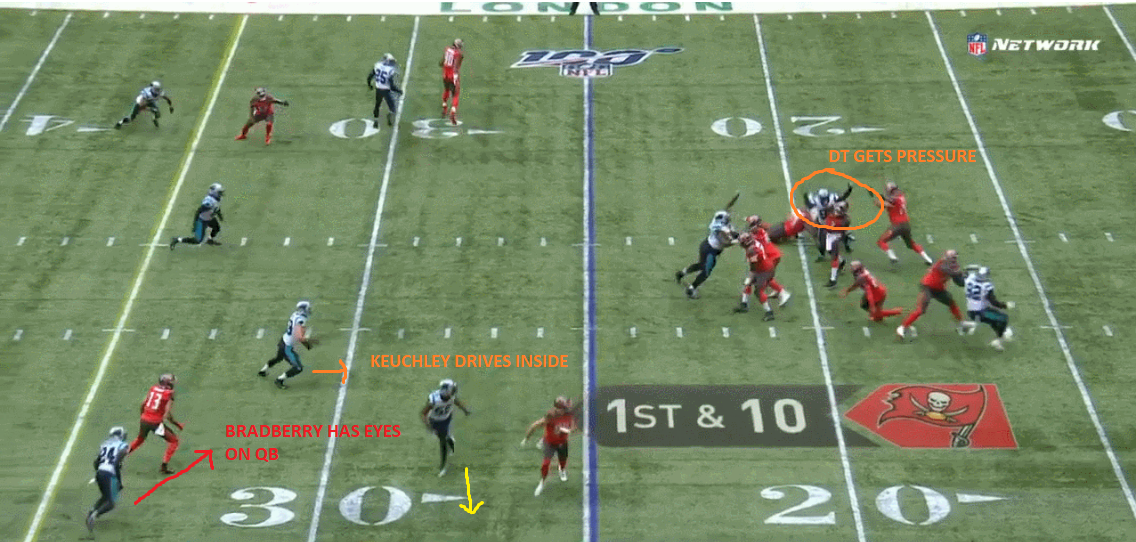
What you can clearly see from this image is how Winston is coming under real pressure from both McCoy and Addison on the back side of the play, and that with Kuechly breaking inside the ball, the window where he can complete the throw is not only shrinking – but it is also shifting outside. What is sure at this point is that this throw is going to be contested at the catch point, and that with the pressure Winston is going to have to be highly accurate to prevent Kuechly from breaking it up while also not leaving it out there for Bradberry to make a play on the ball.
What should be clear by this point, is that Winston was not sufficiently accurate.
However, in stark contrast to their Week 2 performance against the Bucs, the Panthers didn’t just force the incompletion – they instead took maximum advantage of this opportunity, with Bradberry making a great contested catch for the interception:
Yes, Winston paid the price for being overly aggressive on this play, and he would actually have done much better to target the curl on the far side where Cockrell wasn’t able to get quite as nice a break on the ball, but the Panthers should be complimented on their ability to add wrinkles to what was otherwise a very vanilla coverage, on their ability to get quick pressure while only rushing four and on their ability to turn this chance into a turnover.
This one play didn’t win the game on Sunday – and was just the first of seven turnovers the Panthers forced – but this play set the tone for what ended up being a very long afternoon at the office for the Bucs’ offense while also giving Panthers fans yet another glimpse at just how good this defense can be this season, and even if the offense isn’t firing on all cylinders, defensive play of this calibre can take you a long way.

